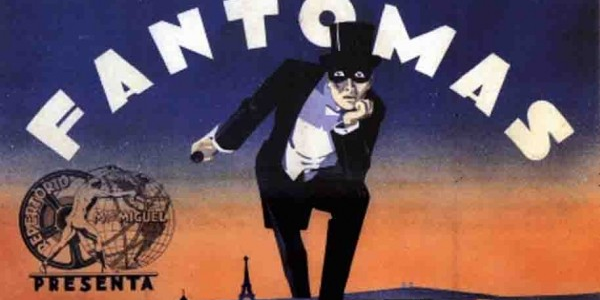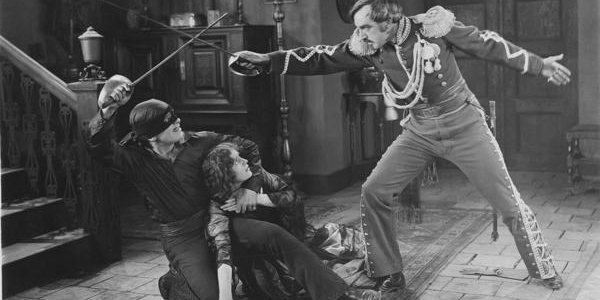7 Ages Of The Comic Book Movie
101 years of comic book movies!
 Warner BrothersTo say that the comic book movie is here to stay may seem like a glib understatement. In 2014 alone there are no less than five massive scale mainstream blockbuster movies being released based on Marvel Comics properties alone (Captain America: The Winter Soldier, The Amazing Spider-Man 2, X-Men: Days of Future Past, Guardians of the Galaxy, and Big Hero 6). Yet it was barely a decade ago that film critics, audiences and analysts perceived the raft of contemporary big screen comic book adaptations as a passing fad, a bubble that would soon burst. Of course films based on comic books (or comic strips) are nothing new, but just how did we get from a time when movies and TV were strictly yknow for kids, cheap and throwaway, to the current dominance of comic adaptations as the blockbuster form? Just as paper comics have their own ages, from Golden through Silver to Bronze and beyond, so have their screen progeny progressed through several epochs, each with their own prevalent trends, interests and style. Come with us, then, as we take a journey back through each of the seven ages of the comic book movie, highlighting the main elements of each and picking out the key films to watch as the best examples of their age.
Warner BrothersTo say that the comic book movie is here to stay may seem like a glib understatement. In 2014 alone there are no less than five massive scale mainstream blockbuster movies being released based on Marvel Comics properties alone (Captain America: The Winter Soldier, The Amazing Spider-Man 2, X-Men: Days of Future Past, Guardians of the Galaxy, and Big Hero 6). Yet it was barely a decade ago that film critics, audiences and analysts perceived the raft of contemporary big screen comic book adaptations as a passing fad, a bubble that would soon burst. Of course films based on comic books (or comic strips) are nothing new, but just how did we get from a time when movies and TV were strictly yknow for kids, cheap and throwaway, to the current dominance of comic adaptations as the blockbuster form? Just as paper comics have their own ages, from Golden through Silver to Bronze and beyond, so have their screen progeny progressed through several epochs, each with their own prevalent trends, interests and style. Come with us, then, as we take a journey back through each of the seven ages of the comic book movie, highlighting the main elements of each and picking out the key films to watch as the best examples of their age. 7. The Prehistoric Age - 1913-1935
 GaumontSequential art is one of the earliest storytelling forms, long predating moving pictures, but the movement of the "funny pages" towards what we understand today as the comic book happened in tandem with the growth of early cinema. As such it should come as no surprise that the pulp adventure storytelling of the silver screen was a major influence on the kinds of characters and stories appearing in comics. By the time that comics inspired movie adaptations of their own there was already a body of comic style films to draw on. The film serial in particular, with its episodic structure in which larger than life heroes and colourful villains swung from one crisis to the next, formed a model for the Golden Age of comics. It is easy to imagine the legacy that early film serials with names like The Green Archer and The Crimson Flash may have had on the creators of classic comic characters. Perhaps the first iconic film serial character, masked master thief Fantomas, appeared in French serials from 1913 and formed an archetype for the athletic, agile, adventurous anti-hero that would be taken up by the twisted genius villains (and some of the masked anti-heroes) of comics twenty years later. Fantomas, whose films were adapted from Marcel Allain and Pierre Souvestre's pulp novels, would go on to star in comics of his own, showing the ever present fluidity of comic-movie characters between media. As film entered the more ambitious 1920s and 1930s and the sound era, this kind of adventure hero moved beyond the cheap and cheerful serials to mainstream blockbusters. In 1934 The Scarlet Pimpernel, perhaps the original version of the foppish-millionaire-by-day, anonymous-crime-fighting-hero-by-night character, came to the big screen in the form of the suave Leslie Howard. After The Scarlet Pimpernel's mainstream popularity the first films directly based on comics would swiftly follow.
GaumontSequential art is one of the earliest storytelling forms, long predating moving pictures, but the movement of the "funny pages" towards what we understand today as the comic book happened in tandem with the growth of early cinema. As such it should come as no surprise that the pulp adventure storytelling of the silver screen was a major influence on the kinds of characters and stories appearing in comics. By the time that comics inspired movie adaptations of their own there was already a body of comic style films to draw on. The film serial in particular, with its episodic structure in which larger than life heroes and colourful villains swung from one crisis to the next, formed a model for the Golden Age of comics. It is easy to imagine the legacy that early film serials with names like The Green Archer and The Crimson Flash may have had on the creators of classic comic characters. Perhaps the first iconic film serial character, masked master thief Fantomas, appeared in French serials from 1913 and formed an archetype for the athletic, agile, adventurous anti-hero that would be taken up by the twisted genius villains (and some of the masked anti-heroes) of comics twenty years later. Fantomas, whose films were adapted from Marcel Allain and Pierre Souvestre's pulp novels, would go on to star in comics of his own, showing the ever present fluidity of comic-movie characters between media. As film entered the more ambitious 1920s and 1930s and the sound era, this kind of adventure hero moved beyond the cheap and cheerful serials to mainstream blockbusters. In 1934 The Scarlet Pimpernel, perhaps the original version of the foppish-millionaire-by-day, anonymous-crime-fighting-hero-by-night character, came to the big screen in the form of the suave Leslie Howard. After The Scarlet Pimpernel's mainstream popularity the first films directly based on comics would swiftly follow. Key Film: The Mark of Zorro (1920)
 United ArtistsArguably the most influential action adventure film of them all, The Mark of Zorro, in which Californian aristocrat Diego de la Vega poses as vigilante Zorro with his black mask, cape and secret cave, influenced the superhero genre as a whole and one hero in particular. Batman's creation owed so much to Fairbanks' Zorro that tribute was paid to it as the film young Bruce Wayne's parents take him to before they are killed.
United ArtistsArguably the most influential action adventure film of them all, The Mark of Zorro, in which Californian aristocrat Diego de la Vega poses as vigilante Zorro with his black mask, cape and secret cave, influenced the superhero genre as a whole and one hero in particular. Batman's creation owed so much to Fairbanks' Zorro that tribute was paid to it as the film young Bruce Wayne's parents take him to before they are killed.